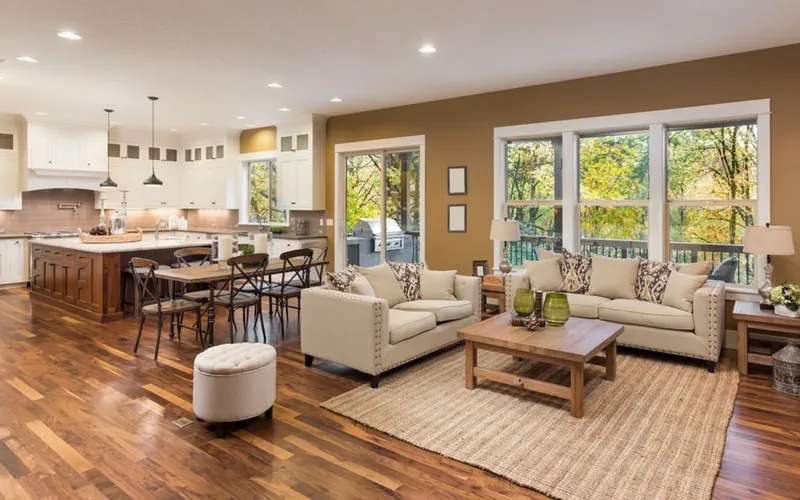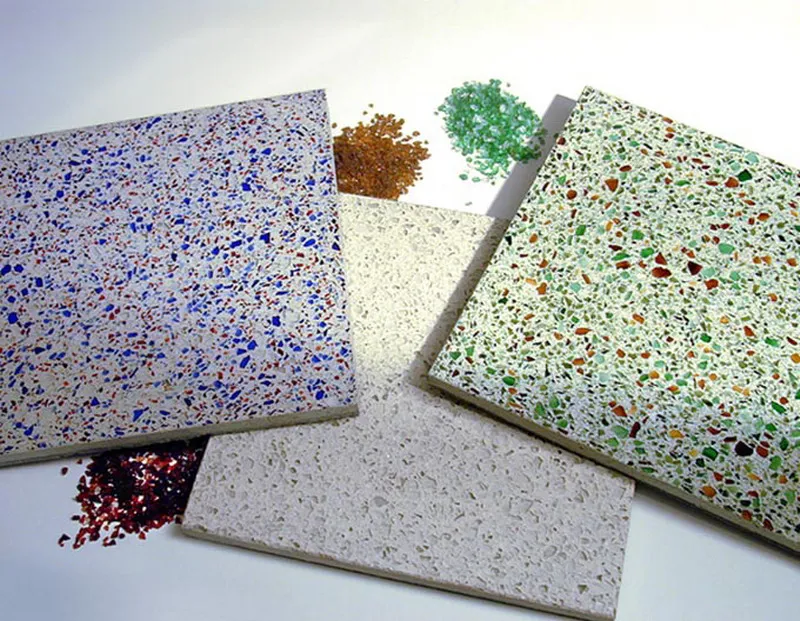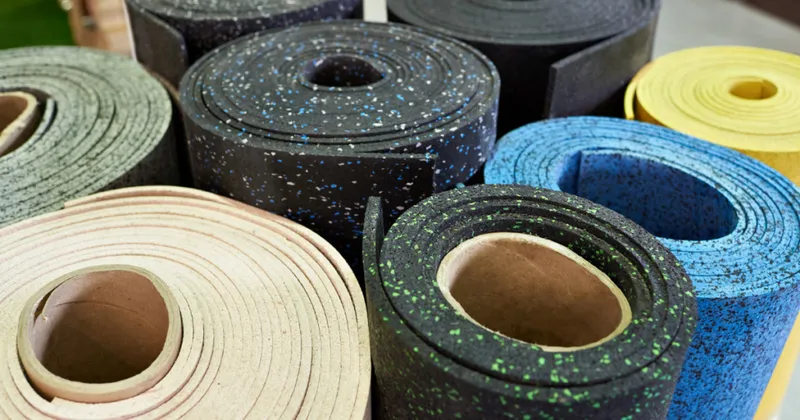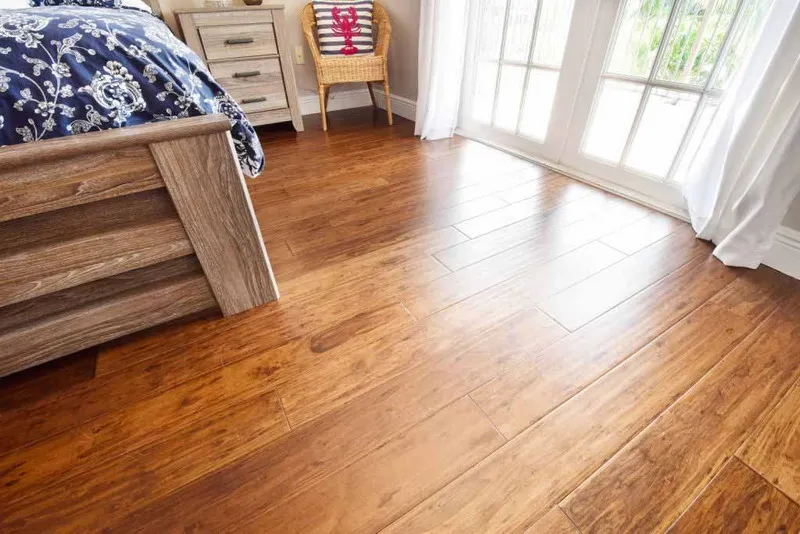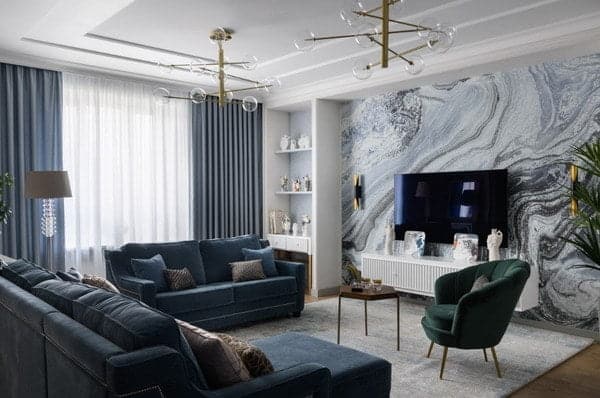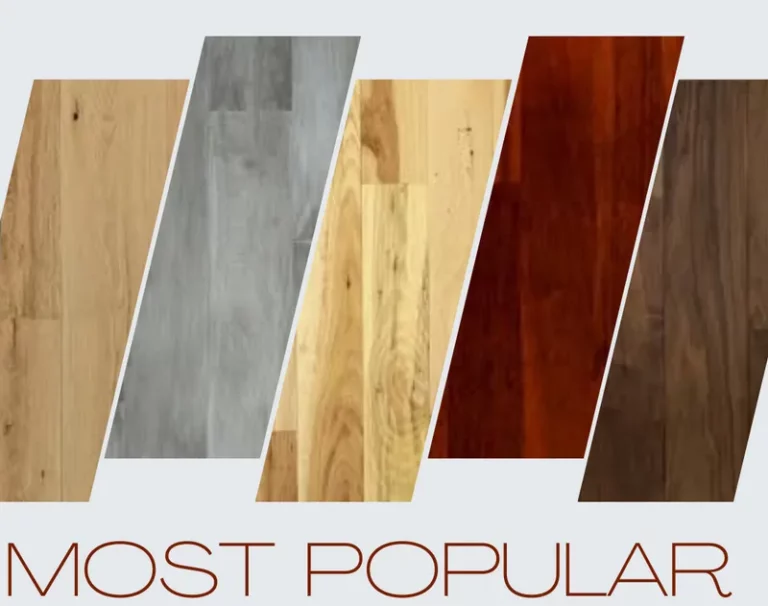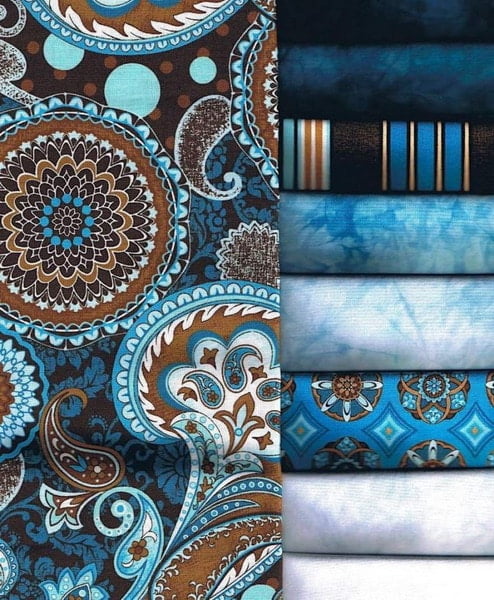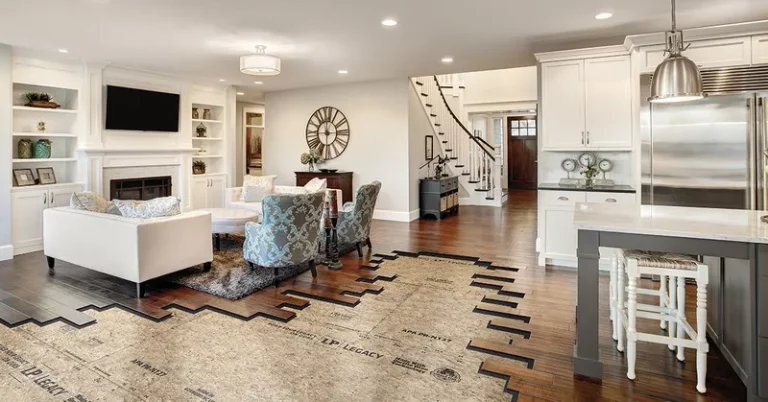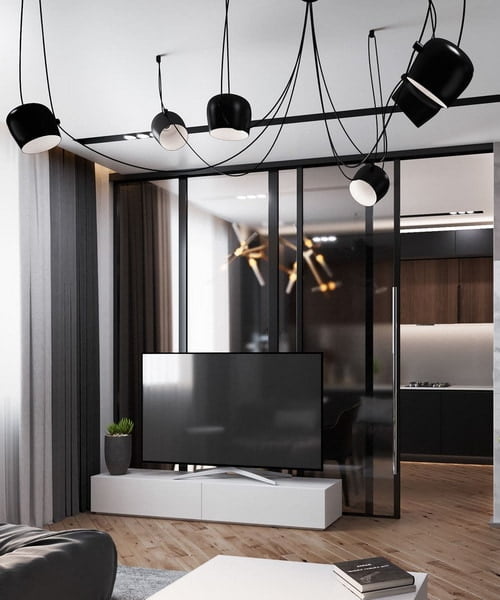Top 10 Eco-Friendly Flooring Trends 2025
Last Updated on May 4, 2024 by zeidqi
As environmental consciousness continues to shape consumer choices, eco-friendly flooring trends are gaining prominence in 2025. Homeowners and designers are increasingly seeking flooring solutions that not only enhance the aesthetic appeal of spaces but also contribute to a healthier planet. Here are the top 10 eco-friendly flooring trends for 2025 that reflect a commitment to sustainable style and modern living.
In conclusion, the top 10 eco-friendly flooring trends for 2025 reflect a growing awareness of the environmental impact of flooring choices. From bamboo and cork to recycled materials and sustainable stonework, these trends showcase a commitment to creating stylish, comfortable, and eco-conscious living spaces.
Bamboo Flooring Trends 2025
Bamboo flooring, known for its eco-friendly nature and distinctive aesthetic appeal, continues to gain momentum as a preferred choice in interior design. As we step into 2025, bamboo flooring trends reflect a perfect blend of sustainability, durability, and timeless elegance.
One of the notable trends for bamboo flooring in 2025 is the exploration of diverse colors and finishes. While the natural light tones of bamboo remain a classic choice, there’s a growing interest in stained or carbonized bamboo trends, offering deeper hues like rich browns and warm caramels. This versatility allows for a broader range of design possibilities, catering to various aesthetic preferences.
Texture plays a crucial role in enhancing the visual appeal of bamboo flooring. Hand-scraped and distressed finishes are gaining popularity, providing a rustic and lived-in look. These textures not only add character to the floor but also contribute to a more relaxed and comfortable atmosphere in the space.
Wide-plank bamboo flooring is making a statement in 2025. The broader planks create a sense of openness and modernity, making them an ideal choice for larger spaces. This trend aligns with the broader movement towards open-concept living, where the seamless flow of flooring from one room to another enhances the overall design aesthetic.
Innovation in bamboo flooring extends to the installation process. Click-lock and glue-down trends offer ease of installation, making bamboo a popular choice for both DIY enthusiasts and professionals. This accessibility adds to the appeal of bamboo flooring, especially in a market where convenience is highly valued.
Sustainability is also a focus in the bamboo flooring industry. Manufacturers are exploring eco-friendly materials and production processes to meet the growing demand for sustainable trends. Homeowners are increasingly seeking flooring solutions that align with their environmental values, and the bamboo industry is responding accordingly.
Advancements in technology are enhancing the functionality of bamboo flooring. Anti-slip surfaces, easy maintenance features, and even smart technologies are being integrated into bamboo tiles, making them not just aesthetically pleasing but also practical for modern living.
Bamboo flooring trends for 2025 reflect a perfect marriage of sustainable elegance and practical innovations. From diverse colors and textures to wide-plank trends and technological advancements, bamboo flooring continues to be a versatile and stylish choice for those who value both aesthetics and environmental responsibility in their homes.
Cork Flooring Trends 2025
Cork flooring, known for its unique properties of comfort and sustainability, is gaining prominence in the flooring market. As we enter 2025, cork flooring trends reflect a perfect fusion of natural aesthetics, eco-friendly practices, and innovative design.
One of the standout trends for cork flooring in 2025 is the exploration of diverse patterns and designs. Cork is a versatile material that can be crafted into various patterns, from classic herringbone to modern geometric shapes. Homeowners and designers are embracing the opportunity to use cork flooring as a canvas for creative expression, adding unique and visually engaging elements to their spaces.
Color diversity is a key aspect of cork flooring trends. While the natural hues of cork, ranging from light tan to warm brown, remain popular, there’s an increasing interest in stained or dyed cork trends. Deep charcoal, muted blues, and even soft pastels are making their way into cork flooring collections, providing homeowners with a broader spectrum of design choices.
Texture plays a crucial role in enhancing the tactile experience of cork flooring. The natural softness and resilience of cork make it a comfortable and pleasant surface underfoot. Additionally, embossed and textured finishes are being explored to add depth and character to the flooring, creating a sensory-rich environment.
Wide-plank cork flooring is gaining popularity for its ability to create a sense of openness and modernity. The wider planks contribute to the illusion of larger spaces, making them an ideal choice for open-concept living areas. This trend aligns with the broader movement towards seamless transitions between rooms and a focus on creating airy, spacious interiors.
Cork’s sustainability is a driving force in its popularity, and this trend continues to grow in 2025. Homeowners are increasingly drawn to eco-friendly flooring trends, and cork stands out for its renewability. Harvesting cork bark does not harm the tree, allowing cork oak forests to thrive while providing a sustainable material for flooring.
Innovation in cork flooring extends to the installation process. Click-lock and glue-down trends offer ease of installation, making cork a practical choice for DIY projects. Additionally, cork’s ability to adapt to various subfloor conditions makes it a versatile option for both new constructions and renovations.
Cork’s natural insulating properties make it an ideal flooring choice for temperature and sound control. In 2025, homeowners are appreciating the energy efficiency that cork provides, keeping spaces warm in winter and cool in summer. Additionally, cork’s ability to absorb sound contributes to a quieter and more peaceful living environment.
Cork flooring trends for 2025 showcase the material’s unique combination of natural comfort and sustainable style. From diverse patterns and colors to wide-plank trends and technological advancements, cork flooring continues to be a standout choice for those seeking a flooring solution that aligns with their values of comfort, style, and environmental responsibility.
Reclaimed Wood Flooring Trends 2025
In 2025, the trend of using reclaimed wood for flooring continues to gain momentum as sustainability and eco-conscious choices become more prevalent in the design and construction industry. Reclaimed wood flooring offers a unique blend of rustic charm and environmental responsibility, making it a popular choice for homeowners and designers alike.
One of the prominent trends in reclaimed wood flooring for 2025 is the emphasis on diverse wood species. While traditional reclaimed wood flooring often featured oak or pine, the current trend involves incorporating a variety of wood species, each with its own distinctive grain patterns and colors. This approach not only adds visual interest to the floors but also contributes to the overall sustainability of the project by utilizing a broader range of reclaimed materials.
Another noteworthy trend is the rise of engineered reclaimed wood flooring. Engineered flooring combines a thin layer of reclaimed wood on top of a base made from high-quality plywood or fiberboard. This construction method enhances stability and durability while allowing for a wider range of installation trends, including over radiant heating systems and in basements.
Texture plays a significant role in reclaimed wood flooring trends for 2025. Homeowners and designers are embracing the natural imperfections and weathered look of reclaimed wood, appreciating the character it adds to spaces. Hand-scraped and wire-brushed finishes are particularly popular, creating a lived-in appearance that complements various design styles, from farmhouse to industrial chic.
As technology advances, innovations in the treatment of reclaimed wood are emerging. Ultra-low VOC (volatile organic compounds) finishes are becoming more prevalent, meeting the demand for healthier indoor air quality. Additionally, some manufacturers are exploring ways to incorporate digital imaging technology to replicate the appearance of reclaimed wood, offering a more sustainable option without sacrificing aesthetics.
In terms of color trends, muted and neutral tones continue to dominate reclaimed wood flooring choices in 2025. Soft grays, warm taupes, and aged browns remain popular, providing versatile trends that complement a wide range of interior styles. These subdued colors allow homeowners to create timeless, elegant looks that withstand evolving design trends.
Ultimately, the reclaimed wood flooring trends for 2025 reflect a commitment to sustainability, innovation, and timeless design. With a focus on diverse wood species, textured finishes, and environmentally friendly technologies, reclaimed wood flooring is poised to remain a sought-after choice for those who value both style and eco-conscious living.
Linoleum Flooring Trends 2025
In 2025, linoleum flooring is experiencing a renaissance as homeowners and designers rediscover its many virtues. Linoleum, made primarily from natural and renewable materials such as linseed oil, wood flour, and cork dust, is celebrated for its durability, eco-friendliness, and vibrant color trends. The trends for linoleum flooring in 2025 showcase its versatility and adaptability to various design preferences.
One notable trend in linoleum flooring is the resurgence of bold and vibrant colors. While neutral tones have dominated interior design in recent years, there is a growing interest in injecting energy and personality into spaces through colorful flooring. Linoleum, with its extensive palette, allows for creative expression, and homeowners are increasingly opting for lively hues like deep blues, emerald greens, and rich yellows.
Patterns and designs are making a strong statement in linoleum flooring trends for 2025. Geometric patterns, intricate motifs, and artistic designs are gaining popularity as homeowners seek unique and personalized flooring trends. These patterns can be used to create focal points in rooms or to add visual interest in areas with minimal decor.
Modularity is another key trend in linoleum flooring. Modular linoleum tiles allow for easy customization, providing homeowners with the flexibility to mix and match colors and patterns to create bespoke designs. This trend not only caters to individual tastes but also facilitates easier maintenance and replacement of damaged tiles.
Sustainability remains a driving force in linoleum flooring trends. As consumers increasingly prioritize eco-friendly trends, linoleum stands out for its natural composition and biodegradability. Manufacturers are responding to this demand by incorporating even more sustainable practices in the production of linoleum, such as water-based adhesives and energy-efficient manufacturing processes.
Texture is playing a significant role in linoleum flooring choices. Embossed textures that mimic natural materials like wood and stone are gaining popularity, providing a tactile element that adds depth to the flooring. These textured linoleum trends appeal to those who appreciate the look and feel of traditional materials but desire the durability and sustainability of linoleum.
Linoleum’s suitability for underfloor heating systems is contributing to its popularity, especially in regions with colder climates. The material’s ability to conduct and retain heat makes it an ideal choice for those looking to combine practicality with style.
Linoleum flooring trends for 2025 showcase a blend of color experimentation, pattern play, sustainability, and tactile experiences. The resurgence of linoleum as a fashionable and eco-friendly flooring option is a testament to its enduring appeal in the ever-evolving world of interior design.
Recycled Glass Tile Flooring Trends 2025
Recycled glass tile flooring is emerging as a sustainable and visually stunning choice for homeowners and designers in 2025. This eco-friendly flooring option, made from post-consumer and post-industrial glass, offers a unique blend of beauty and environmental responsibility. The trends for recycled glass tile flooring in 2025 showcase its versatility and appeal across various design styles.
One of the standout trends in recycled glass tile flooring is the emphasis on color variation. Homeowners and designers are drawn to the diverse palette that recycled glass tiles offer, ranging from subtle neutrals to bold and vibrant hues. The ability to create intricate patterns and mosaics using these varied colors adds a dynamic and artistic element to interior spaces.
Large-format glass tiles are gaining popularity in 2025, providing a sleek and modern aesthetic. These larger tiles create a seamless look with fewer grout lines, contributing to a clean and contemporary feel. Additionally, the larger surface area allows for a more prominent display of the unique characteristics of recycled glass, such as bubbles and imperfections, adding a touch of authenticity to the flooring.
Mosaic patterns continue to be a strong trend in recycled glass tile flooring. Homeowners are exploring creative ways to incorporate mosaic designs into their floors, whether in small sections as accents or throughout entire rooms. Mosaics offer a customizable and artistic approach, allowing for the expression of individual style preferences and the creation of one-of-a-kind flooring designs.
Texture is playing a significant role in the popularity of recycled glass tile flooring. Tiles with textured surfaces, whether achieved through embossing or unique patterns, add depth and interest to the flooring. This trend caters to those seeking a tactile element in their flooring choices, enhancing both the visual and sensory experience of the space.
In response to the growing demand for sustainable materials, manufacturers are exploring innovative production methods for recycled glass tiles. Water-conserving manufacturing processes and the use of recycled water in production are becoming more common, aligning with the eco-conscious values of consumers.
Recycled glass tile flooring’s versatility extends beyond indoor spaces, with an increasing interest in using these tiles for outdoor applications. The durability of glass, coupled with its resistance to fading and discoloration, makes it a viable option for patios, pool surrounds, and other exterior areas.
Recycled glass tile flooring trends for 2025 showcase a commitment to color diversity, large-format tiles, mosaic patterns, texture, and sustainability. This flooring option not only adds a touch of luxury to interiors but also contributes to a more sustainable and eco-friendly approach to design and construction. As consumers continue to prioritize environmental responsibility, recycled glass tile flooring is likely to remain a prominent choice in the evolving landscape of flooring trends.
Recycled Metal Tile Flooring Trends 2025
As sustainability becomes an integral consideration in interior design, recycled metal tile flooring is emerging as a trendsetter in 2025. This eco-friendly flooring option, crafted from repurposed metal materials, brings a unique blend of industrial aesthetics and environmental responsibility to homes and commercial spaces. The trends for recycled metal tile flooring in 2025 showcase innovation, versatility, and a commitment to sustainable living.
One of the key trends in recycled metal tile flooring is the diversity in metal sources. While traditional trends often featured repurposed aluminum or steel, the trend for 2025 involves incorporating a broader range of metals, each with its own distinct characteristics. Copper, brass, and even reclaimed tin are finding their way into metal tile designs, offering a rich tapestry of colors and textures for flooring enthusiasts.
Large-format metal tiles are making a strong statement in 2025, providing a modern and bold aesthetic. These oversized tiles contribute to a seamless appearance with fewer grout lines, creating a sleek and contemporary look. The larger surface area allows for a more pronounced display of the unique patinas and finishes characteristic of recycled metals, adding an element of sophistication to the flooring.
Patterns and designs are taking center stage in recycled metal tile flooring trends. Intricate geometric patterns, artistic motifs, and even customized designs are gaining popularity as homeowners seek flooring trends that transcend the conventional. These patterns add a layer of visual interest, making recycled metal tile flooring a versatile choice for those looking to make a statement in their interiors.
Texture is a key player in the appeal of recycled metal tile flooring. Textured surfaces, achieved through embossing or unique patterns, enhance the tactile experience of the flooring. Homeowners and designers are drawn to the interplay of light and shadow on these textured surfaces, adding depth and dimension to the overall design.
In response to the growing demand for sustainable materials, manufacturers are exploring innovative production methods for recycled metal tiles. Energy-efficient manufacturing processes, water conservation initiatives, and the use of recycled water in production are becoming standard practices. These measures not only align with eco-conscious values but also contribute to the overall environmental impact of the flooring.
Recycled metal tile flooring is finding its way beyond traditional indoor spaces. Its durability and resistance to environmental factors make it a suitable option for outdoor applications. Patios, decks, and even façades benefit from the unique characteristics of recycled metal tiles, providing a distinctive and sustainable choice for exterior design.
Recycled metal tile flooring trends for 2025 embody a commitment to diversity in metal sources, large-format tiles, intricate patterns, texture, and sustainability. This flooring option not only appeals to those with an affinity for industrial aesthetics but also to individuals seeking innovative and environmentally responsible choices for their living spaces. As the demand for sustainable design solutions continues to grow, recycled metal tile flooring is poised to remain at the forefront of flooring trends.
Wool Carpet Trends 2025
In 2025, wool carpet continues to be a luxurious and timeless choice for flooring, combining comfort, durability, and natural beauty. As homeowners and designers seek sustainable and high-quality materials, wool carpet trends for the year reflect a commitment to both classic elegance and modern innovation. From color palettes to texture preferences, the trends in wool carpet flooring showcase a versatile and enduring appeal.
One of the prominent trends in wool carpet for 2025 is the emphasis on natural and earthy tones. Soft neutrals, warm beiges, and calming greys are gaining popularity, providing a versatile backdrop for various interior styles. These muted colors not only create a sense of serenity in living spaces but also allow for easy integration with different design elements, making wool carpet a timeless choice that withstands changing trends.
Texture plays a crucial role in wool carpet trends, with a focus on plush and sumptuous surfaces. Homeowners are drawn to the luxurious feel of wool underfoot, appreciating its softness and warmth. Cut-pile and loop-pile constructions are both popular, with variations like saxony and frieze offering different levels of comfort and visual interest. The tactile experience of wool carpet adds a layer of sensory delight to interior spaces.
Geometric patterns are making a comeback in wool carpet designs for 2025. From subtle herringbone patterns to bold geometric shapes, these designs add a modern twist to the classic elegance of wool. Patterned wool carpets are particularly popular in areas where homeowners want to create focal points or add visual interest without overwhelming the space.
Sustainability remains a driving force in wool carpet trends, as consumers increasingly prioritize eco-friendly trends. Wool, a natural and renewable fiber, inherently aligns with these values. Manufacturers are responding to this demand by implementing sustainable practices in the production of wool carpets, including responsible sourcing of wool, water conservation, and energy-efficient manufacturing processes.
Customization is a notable trend in wool carpet for 2025, allowing homeowners to create bespoke flooring solutions that suit their unique preferences. Custom colors, patterns, and even personalized designs are becoming more accessible, empowering individuals to express their individuality through their flooring choices. This trend aligns with the broader shift towards personalization in interior design.
Wool carpet’s ability to improve indoor air quality is a significant factor contributing to its continued popularity. Wool fibers naturally trap and filter airborne particles, making it an excellent choice for those with allergies or respiratory sensitivities. Additionally, wool has inherent flame-resistant properties, adding an extra layer of safety to living spaces.
In conclusion, wool carpet trends for 2025 reflect a harmonious blend of natural tones, plush textures, geometric patterns, sustainability, and customization. This flooring option continues to be a symbol of luxury and sophistication while adapting to the evolving preferences of homeowners and designers. As the quest for sustainable and timeless design solutions persists, wool carpet remains a steadfast choice in the world of flooring trends.
Recycled Rubber Flooring Trends 2025
Recycled rubber flooring is gaining traction as a versatile and sustainable option for 2025, combining resilience, eco-friendliness, and a modern aesthetic. This flooring choice, made from recycled rubber materials, is finding its way into a variety of spaces, from gyms and play areas to residential interiors. The trends in recycled rubber flooring for 2025 reflect a commitment to durability, innovation, and environmental consciousness.
One of the standout trends in recycled rubber flooring is the expansion of color trends. Traditionally associated with black or dark colors, recycled rubber flooring is now available in a broader spectrum, including neutrals, earth tones, and even vibrant hues. This trend allows for greater design flexibility, enabling homeowners and designers to incorporate recycled rubber flooring into a variety of settings while maintaining a cohesive aesthetic.
Large-format rubber tiles are making a strong impact in 2025, offering a sleek and contemporary look. These oversized tiles contribute to a seamless appearance with minimal seams, creating a modern and clean aesthetic. The larger surface area also allows for a more prominent display of the unique textures and patterns inherent in recycled rubber, adding visual interest to the flooring.
Patterned rubber flooring is gaining popularity as homeowners seek innovative and personalized design trends. Intricate designs, geometric patterns, and even customized logos or graphics can be incorporated into the rubber flooring, providing a unique and branded element to commercial spaces or adding a touch of personality to residential interiors. This trend aligns with the broader movement towards customizable flooring solutions.
Texture is a significant factor in the appeal of recycled rubber flooring. The natural resilience and elasticity of rubber create a comfortable and supportive surface underfoot. Additionally, textured finishes, such as studded or embossed patterns, add visual interest and contribute to slip resistance, making rubber flooring a practical choice for areas with high foot traffic.
Sustainability remains a driving force in recycled rubber flooring trends. The use of recycled rubber from post-consumer sources, such as discarded tires, contributes to the reduction of waste in landfills. Manufacturers are also exploring more eco-friendly production processes, incorporating water-based adhesives and energy-efficient manufacturing methods.
The versatility of recycled rubber flooring extends beyond traditional indoor spaces. Its durability and resistance to water and chemicals make it suitable for outdoor applications, such as patios, balconies, and even pool areas. The low maintenance requirements and long lifespan of recycled rubber flooring further contribute to its appeal for both residential and commercial use.
Recycled rubber flooring trends for 2025 showcase a commitment to expanded color trends, large-format tiles, pattern play, texture, and sustainability. This flooring option offers a balance between durability and design flexibility, making it a compelling choice for those seeking a modern and eco-friendly solution. As the demand for sustainable and resilient flooring continues to rise, recycled rubber flooring is positioned to remain at the forefront of innovative design trends.
Eucalyptus Flooring Trends 2025
Eucalyptus flooring is gaining significant attention in 2025 as an eco-friendly and aesthetically pleasing option for homeowners and designers. Sourced from rapidly renewable eucalyptus trees, this flooring choice combines sustainability with durability and a distinctive visual appeal. The trends for eucalyptus flooring in 2025 showcase a commitment to natural beauty, versatility, and environmental responsibility.
One of the prominent trends in eucalyptus flooring for 2025 is the focus on natural and varied finishes. Homeowners and designers are embracing the inherent beauty of eucalyptus wood, with an emphasis on showcasing the wood’s unique grain patterns and natural hues. Matte finishes that highlight the wood’s organic qualities are particularly popular, creating a look that is both modern and timeless.
Wide plank eucalyptus flooring is making a strong statement in 2025, contributing to a sense of openness and sophistication. The wider planks showcase the eucalyptus wood’s natural characteristics on a larger scale, allowing for a more expansive and visually impactful flooring surface. This trend aligns with the desire for clean, uncluttered spaces that exude a sense of luxury.
Innovations in the manufacturing of eucalyptus flooring are contributing to its popularity. Engineered eucalyptus flooring, which consists of a thin layer of eucalyptus veneer on top of a high-quality plywood or fiberboard base, is gaining traction. This construction method enhances stability and allows for a wider range of installation trends, including over radiant heating systems.
Color trends in eucalyptus flooring for 2025 reflect a preference for warm, nature-inspired tones. Rich browns, golden yellows, and muted greens are popular choices, creating a connection to the outdoors and bringing a sense of tranquility to interior spaces. These earthy tones complement a variety of design styles, from contemporary to rustic, making eucalyptus flooring a versatile option.
Texture is a key player in eucalyptus flooring choices, with homeowners and designers gravitating towards hand-scraped and wire-brushed finishes. These textured surfaces add depth and character to the flooring, creating a lived-in and inviting look. The tactile experience of eucalyptus flooring further enhances its appeal, providing a flooring option that is not only visually pleasing but also enjoyable to touch.
Sustainability remains a driving force in eucalyptus flooring trends. The rapid growth of eucalyptus trees, which can reach maturity in as little as 10-15 years, makes it an environmentally responsible choice. Manufacturers are also exploring ways to enhance the sustainability of eucalyptus flooring, from responsible forestry practices to water-based finishes that minimize environmental impact.
Eucalyptus flooring’s suitability for various settings, including bedrooms, living rooms, and even kitchens, contributes to its widespread adoption. Its resistance to pests and durability make it a practical choice for high-traffic areas, while its warm and inviting appearance adds a touch of natural elegance to any room.
Eucalyptus flooring trends for 2025 showcase a commitment to natural finishes, wide plank designs, engineered trends, warm color palettes, textured surfaces, and sustainability. This flooring option combines the allure of natural wood with the benefits of eco-friendly and rapidly renewable materials, making it a compelling choice for those seeking a harmonious blend of style and environmental responsibility.
Marmoleum Flooring Trends 2025
Marmoleum, a natural linoleum flooring option, is gaining popularity in 2025 as homeowners and designers increasingly value sustainable and healthy choices for interior spaces. Made from natural raw materials such as linseed oil, wood flour, and jute, marmoleum flooring offers a unique combination of durability, comfort, and environmental friendliness. The trends for marmoleum flooring in 2025 showcase a commitment to color diversity, design innovation, and eco-conscious living.
One of the standout trends in marmoleum flooring for 2025 is the exploration of bold and vibrant colors. While neutral tones have dominated interior design in recent years, there is a growing interest in injecting energy and personality into spaces through colorful flooring. Marmoleum’s extensive color palette allows for creative expression, with choices ranging from deep blues and vibrant reds to soft pastels and earthy greens.
Patterns and designs are making a strong statement in marmoleum flooring trends. Geometric patterns, intricate motifs, and artistic designs are gaining popularity as homeowners seek unique and personalized flooring trends. These patterns can be used to create focal points in rooms, add visual interest to minimalist spaces, or evoke a specific design theme.
Modularity is a key trend in marmoleum flooring, offering homeowners the flexibility to create customized designs. Modular marmoleum tiles come in various shapes and sizes, allowing for easy mixing and matching to achieve unique patterns and layouts. This trend aligns with the desire for individualized and creative expression in interior design.
Texture is playing a significant role in marmoleum flooring choices, with embossed textures that mimic natural materials like wood and stone gaining popularity. These textured surfaces add depth and authenticity to the flooring, providing a tactile element that enhances the overall sensory experience of the space.
Innovation in design and production methods is contributing to the popularity of marmoleum flooring. The incorporation of digital printing technology allows for highly detailed and realistic patterns, providing homeowners with a wider range of design trends. Additionally, the use of water-based adhesives and eco-friendly manufacturing processes aligns with the sustainability goals of environmentally conscious consumers.

